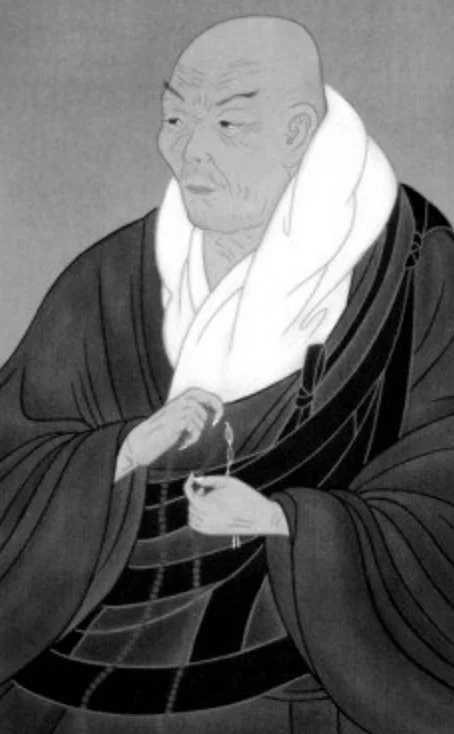Key Ancestors and Traditions
Shandao (Chinese Pure Land)
Shandao (613–681) was a prominent Chinese Buddhist monk and scholar, recognized as a major figure in the development of Pure Land Buddhism. Born in what is now Zhucheng, Shandong Province, Shandao entered the priesthood at a young age and studied under Master Mingsheng, focusing on Mahayana scriptures such as the Lotus Sutra and Vimalakirti Sutra. Shandao became a disciple of the Pure Land master Daochuo, which led him to dedicate his life to the Pure Land teachings. He is renowned for systematising Pure Land thought and emphasising the practice of nianfo, the recitation of Amitābha Buddha's name, as the primary means for attaining rebirth in the Pure Land]. His teachings asserted that even ordinary people could achieve salvation through reliance on Amitābha's vows, making Pure Land Buddhism accessible to a broader audience. Shandao's works, particularly his commentaries on the Contemplation Sutra, greatly influenced later Pure Land masters, including Japanese figures like Hōnen and Shinran.. His teachings and parables, such as the "Two Rivers and a White Path," continue to be significant in Pure Land traditions across East Asia.
Honen (Jodo Shu)
Hōnen, originally named Seishimaru, was born in 1133 in Mimasaka Province, Japan. He became a significant figure in Japanese Buddhism as the founder of the Jōdo Shū (Pure Land) sect. After his father's death, he was sent to a Tendai Buddhist temple and later studied at Mount Hiei, where he became a Tendai priest. Hōnen was deeply influenced by the Pure Land teachings, particularly those of the Chinese master Shandao, which emphasised salvation through the recitation of the name of Amida Buddha, known as the nembutsu. In 1175, Hōnen left the Tendai order to promote the exclusive practice of nembutsu, believing it to be the most accessible path to salvation for people in the age of mappō, a time of spiritual decline. His teachings gained a large following among various social classes, including women and the aristocracy. However, his emphasis on nembutsu led to criticism and persecution from established Buddhist sects. In 1207, Hōnen was exiled due to political and religious opposition but was allowed to return in 1211. He passed away in 1212, leaving a lasting impact on Japanese Buddhism.
Shinran (Jodo Shinshu)
Shinran (1173–1263) was a Japanese Buddhist monk and the founder of the Jōdo Shinshū (True Pure Land) sect of Buddhism. Born into the aristocratic Hino family, a branch of the Fujiwara clan, Shinran was ordained as a Tendai monk at the age of nine and studied on Mount Hiei for twenty years. Disillusioned with the traditional monastic practices, Shinran sought a more accessible path to enlightenment. In 1201, he became a disciple of Hōnen, a Pure Land master, who taught the practice of nembutsu, the recitation of Amida Buddha's name, as a means of salvation. Shinran embraced this teaching, emphasising faith (shinjin) in Amida's vow as the key to rebirth in the Pure Land. Shinran's teachings diverged from traditional monastic norms; he married and had children, arguing that Amida's salvation was available to all, not just monks. His approach led to his exile in 1207, but he continued to spread his teachings in the Kantō region and later in Kyoto.
Ippen (Ji Shu)
Ippen Shōnin (1234–1289) was a Japanese Buddhist monk who founded the Ji-shū (Time Sect) branch of Pure Land Buddhism. Born into the Kōno family, Ippen initially studied Tendai Buddhism on Mount Hiei and later Pure Land Buddhism in Dazaifu. His spiritual journey took a significant turn at age 25, following a revelation during a pilgrimage to Kumano, where he realised enlightenment could be achieved through the recitation of Amida Buddha's name, known as nembutsu. Ippen's teachings emphasised the practice of nembutsu combined with an ecstatic dance, which became popular among common people. This practice was performed at regular intervals, giving rise to the name "Time Sect." Ippen travelled extensively across Japan with his followers, advocating for renunciation of worldly attachments. Before passing away, he destroyed his writings, although some disciples preserved copies. His legacy remains significant in Japanese Buddhism, and his life is depicted in the Ippen Shōnin Eden, a set of illuminated manuscripts.




